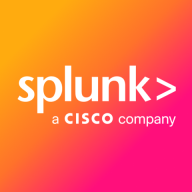

New Relic and Splunk AppDynamics compete in the application performance monitoring sector. New Relic appears to have the upper hand with its seamless integration and real-time analytics.
Features: New Relic offers robust monitoring for JavaScript applications, real-time analytics, and a user-friendly dashboard. Splunk AppDynamics stands out with its auto-discovery features, diverse transaction tracking, and strong business transaction monitoring.
Room for Improvement: New Relic could benefit from simplifying its user interface, enhancing alert customization, and revising its pricing model. Splunk AppDynamics could improve network monitoring, alert mechanisms, and agent management for simpler deployments.
Ease of Deployment and Customer Service: New Relic excels in rapid deployment and real-time problem resolution but could improve support responsiveness. Splunk AppDynamics offers flexible deployment options and highly regarded customer service with quick support and dedicated account management.
Pricing and ROI: New Relic’s usage-based pricing model is flexible but can be costly, although offset by analytics and quick deployment. Splunk AppDynamics is considered expensive with complex licensing yet offers considerable ROI with performance insights and proactive problem resolution.
Issues that could be solved quickly sometimes take longer because they go around in circles.
The customer service and support are helpful and responsive.
We have reached maximum capacity in our tier, and extending capacity has not been cost-effective from Splunk's perspective.
I did not find any Docker solution available with it, and a separate instance has to be installed.
It is necessary to conduct appropriate testing before deploying them in production to prevent potential outages.
I can rate it nine out of ten.
Email alert customization is limited; it cannot be tailored much, which makes the system more rigid than optimal.
Splunk AppDynamics provides an end-to-end view of the application but misses the infrastructure part, which is crucial.
If AppDynamics could develop a means to monitor without an agent, it could significantly improve application performance and reduce potential problems.
Customers have to pay a premium price, however, they receive considerable value from the product.
All these solutions at the moment are cheap, but it is like paying for insurance; you pay insurance to avoid major damage.
Using New Relic speeds up troubleshooting and resolution, giving us a clearer picture of where issues are, thus saving time and effort.
What I like the most about Splunk AppDynamics is the end-to-end observability for the application, along with traces.
The feature that I appreciate in AppDynamics Browser Real-User Monitoring is the intuitive and user-friendly dynamic mapping it creates for workflows.
The real-time feature provides me with insights into what's happening.


New Relic is a powerful tool for optimizing web pages, tracking user behavior, and monitoring application performance. It helps detect anomalies, generate metrics, and create dashboards for synthetics monitoring, container workloads, stress tests, and more.
New Relic provides organizations with comprehensive insights into APIs, infrastructure, and scalability. It supports mobile and web applications with features like java tracking, health maps, customizable dashboards, and drill-downs. Users benefit from its easy initial setup, accurate alerts, UI monitoring, error tracking, and traceability. New Relic supports multiple ecosystems with straightforward pricing and new feature introductions, offering end-to-end monitoring, thorough data analysis, and effective problem resolution.
What are New Relic's most important features?New Relic is leveraged in industries such as e-commerce, finance, and technology. It helps monitor web traffic, evaluate load balancing, and ensure applications meet performance standards. Companies use it for stress tests, container-based workloads, API monitoring, and infrastructure management. Its integration capabilities are valuable for maintaining performance and scalability across diverse ecosystems, aiding in thorough data analysis and problem resolution.
Splunk AppDynamics enhances application performance monitoring with advanced diagnostics and real-time insights, offering seamless end-to-end transaction tracking and infrastructure visibility.
AppDynamics provides critical tools for businesses to analyze application behavior and performance. Through innovative features like transaction snapshot analysis and adaptable dashboards, users can quickly identify and address issues, ensuring high levels of system uptime and efficiency. It is designed to support complex environments including Kubernetes and AWS, enhancing user experience by detecting performance issues early. Despite needing improvements in network monitoring and integration, it remains a robust option for tracking application health.
What are the key features of AppDynamics?In industries like financial services and e-commerce, AppDynamics facilitates performance tracking across distributed systems, optimizing infrastructure to meet consumer demands. It excels in environments needing precise transaction monitoring and is pivotal in delivering high value and satisfaction.
We monitor all Application Performance Monitoring (APM) and Observability reviews to prevent fraudulent reviews and keep review quality high. We do not post reviews by company employees or direct competitors. We validate each review for authenticity via cross-reference with LinkedIn, and personal follow-up with the reviewer when necessary.